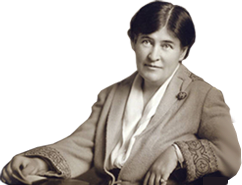
Willa Cather has given us gorgeous descriptions of the Great Plains and nature. Would she be a staunch environmentalist today? I can't find the answer to where she stood on the Green issues of her day--forest conservation and the establishment of National Parks. I can, however, guess that she would support real books over screens when it comes to reading, though probably not for reasons of conservation. Surprisingly, reading books, you know those portable, inexpensive, long lasting vessels of knowledge, adventure and beauty, are the Green choice today. Read on and comment.
Published: April 4, 2010
How Green Is My iPad?
By DANIEL GOLEMAN and GREGORY NORRIS
With e-readers like Apple’s new iPad and Amazon’s Kindle touting their vast libraries of digital titles, some bookworms are bound to wonder if tomes-on-paper will one day become quaint relics. But the question also arises, which is more environmentally friendly: an e-reader or an old-fashioned book?
To find the answer, we turned to life-cycle assessment, which evaluates the ecological impact of any product, at every stage of its existence, from the first tree cut down for paper to the day that hardcover decomposes in the dump. With this method, we can determine the greenest way to read. . . .
So, how many volumes do you need to read on your e-reader to break even?
With respect to fossil fuels, water use and mineral consumption, the impact of one e-reader payback equals roughly 40 to 50 books. When it comes to global warming, though, it’s 100 books; with human health consequences, it’s somewhere in between.
All in all, the most ecologically virtuous way to read a book starts by walking to your local library. [my emphasis]
Go Here for full article



No comments:
Post a Comment